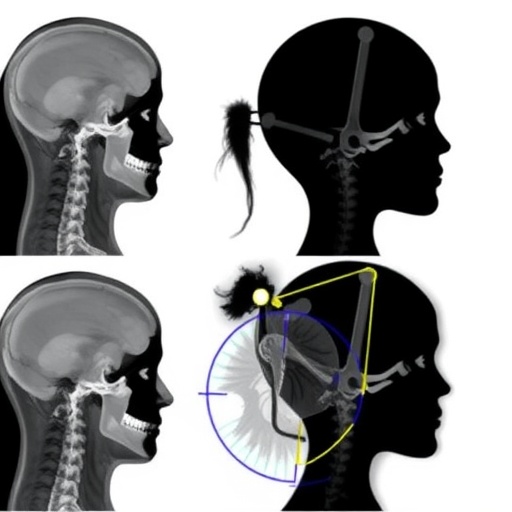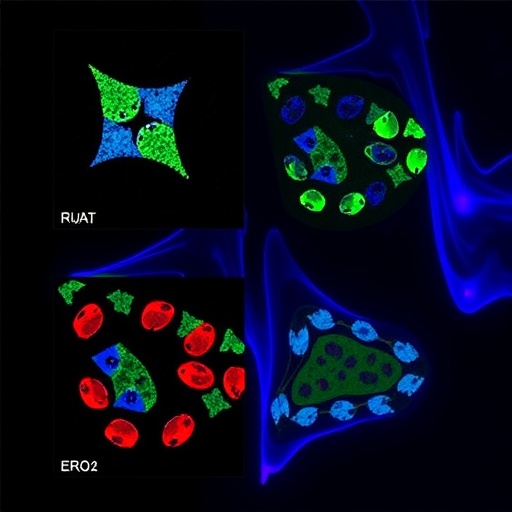In the vast field of epidemiology, the pursuit of understanding congenital malformations has taken a significant leap in recent years, especially with data-driven research. A recent comprehensive study has shed new light on the incidence and impact of neural tube defects and orofacial malformations in Chile. The work, led by prominent researchers like Busso, Jiménez, and González, examines data sourced from the National Registry of Congenital Anomalies, known locally as RENACH. This valuable registry has provided a wealth of information, allowing for a deeper insight into these severe health issues that affect neonates.
Neural tube defects (NTDs), comprising a range of abnormalities such as spina bifida and anencephaly, are critical to the study of congenital malformations. These conditions occur in the early stages of pregnancy when the neural tube, which eventually forms the brain and spinal cord, fails to close properly. Meanwhile, orofacial malformations encompass a spectrum of conditions, including cleft lip and cleft palate, which can have profound effects on an individual’s health and quality of life. The collaborative effort behind this research aims to dissect the epidemiological trends and identify the underlying factors contributing to these malformations.
This study represents a concerted effort to analyze and interpret data collected over several years, effectively positioning itself as a pivotal resource for public health authorities and medical professionals alike. The dataset compiled by RENACH, encompassing various demographic and clinical parameters, has enabled researchers to identify patterns and correlations that were previously obscure. By illuminating the prevalence of these defects across different regions in Chile, the findings offer a roadmap for targeted interventions and healthcare strategies.
Investigators employed advanced statistical methods to analyze the vast dataset, assessing various risk factors associated with the observed malformations. Factors such as maternal age, socioeconomic status, nutritional habits, and prenatal care quality were meticulously examined. Preliminary findings suggest that socioeconomic disparities significantly affect the prevalence of neural tube and orofacial malformations. Such insights highlight the importance of integrating epidemiological data with socioeconomic indicators to better address these public health challenges.
The implications of this research extend beyond understanding the prevalence of congenital anomalies. By identifying modifiable risk factors, public health campaigns could be developed to educate expecting mothers about proper prenatal care, nutrition, and the preconception period—a significant time for fetal development. Moreover, these findings underscore the need for public policies that ensure equitable access to quality healthcare services, particularly for vulnerable populations at higher risk for these conditions.
A notable aspect of the study is its emphasis on the importance of early detection and intervention. With the right resources and education, the impact of these congenital malformations can be mitigated. This research calls for a renewed commitment to prenatal health, encouraging stakeholders in the healthcare system to collaborate in fostering environments where maternal and fetal health can thrive. The findings serve as a clarion call for comprehensive strategies that encompass awareness, education, and accessible healthcare services for women of reproductive age.
Furthermore, the study’s authors stress the need for international collaboration in addressing congenital malformations globally. The insights gained from the Chilean experience could be invaluable for other countries facing similar challenges. By sharing data, methodologies, and outcomes, researchers can work collectively to combat the incidence of neural tube and orofacial malformations, ultimately driving advancements in maternal-fetal medicine and public health initiatives worldwide.
The rigorous analysis conducted in this study contributes significantly to the body of knowledge surrounding congenital defects. As scientific inquiry continues to evolve, the need for robust epidemiological studies remains paramount. In a world where healthcare disparities persist, ensuring that communities have access to information and preventative measures becomes increasingly critical. This research not only raises awareness but also fosters a sense of urgency to prioritize maternal and child health on a global scale.
In conclusion, the study by Busso, Jiménez, and González provides a profound understanding of the epidemiological landscape of neural tube and orofacial malformations in Chile. With their research grounded in the National Registry of Congenital Anomalies, they pave the way for future studies seeking to unravel the complexities of congenital disorders. As we continue to explore the multifaceted dimensions of public health, it is imperative that we advocate for science-driven policies and initiatives that prioritize the health and well-being of future generations.
The significance of this research cannot be overstated—it is a crucial step towards understanding and eventually reducing the incidence of congenital malformations. As we move forward, the need for continued research, education, and advocacy in this area remains vital. The collaboration between researchers, healthcare professionals, and policymakers can lead to substantial improvements in maternal and child health outcomes, not just in Chile, but worldwide. Thus, this study stands as a testament to the power of data in igniting change and fostering healthier futures for all.
Subject of Research: Neural tube and orofacial malformations in Chile
Article Title: Epidemiological insights into neural tube and orofacial malformations in Chile using data from the National Registry of Congenital Anomalies (RENACH)
Article References:
Busso, D., Jiménez, F., González, M.J. et al. Epidemiological insights into neural tube and orofacial malformations in Chile using data from the National Registry of Congenital Anomalies (RENACH).
BMC Pediatr 25, 862 (2025). https://doi.org/10.1186/s12887-025-05999-6
Image Credits: AI Generated
DOI:
Keywords: Neural tube defects, orofacial malformations, congenital anomalies, Chile, epidemiology, public health, maternal health, prenatal care, socioeconomic factors.
Tags: anencephaly prevalence analysiscleft lip and palate effectscongenital malformations in Chiledata-driven health researchepidemiological trends in congenital anomaliesmaternal health and congenital defectsneonatal health outcomesneural tube defects epidemiologyorofacial malformations researchpublic health implications of NTDsRENACH congenital anomalies registryspina bifida incidence study





